New electronic gadgets always bring out my inner cynic, like the first time I heard someone raving about their new portable power station for RV camping. It sounded like just gizmo that would take up precious space in my small fifth wheel. But after some research, I’m not too proud to admit that I was wrong about these things. Today I’m a believer that these devices can be a huge benefit for RVers who love camping off-grid. Here’s what changed my mind.
Not Just Another Dry Camping Gadget
From smartphones to headlamps, we all RV with more electronics than we used to. Even our rigs are loaded with electronics that consume more power, like push-button RV dumping and automatic leveling systems. That’s why if you haven’t looked into adding a portable power station to your RV gear, now’s the time. These ultra-efficient, clean energy stations are better than ever at keeping your creature comforts powered up wherever you camp. And although they are not inexpensive, if you decide to take the plunge on a device like the Jackery Explorer, the payback is immediate. More power means more comforts and longer stays when you’re camping without hookups.
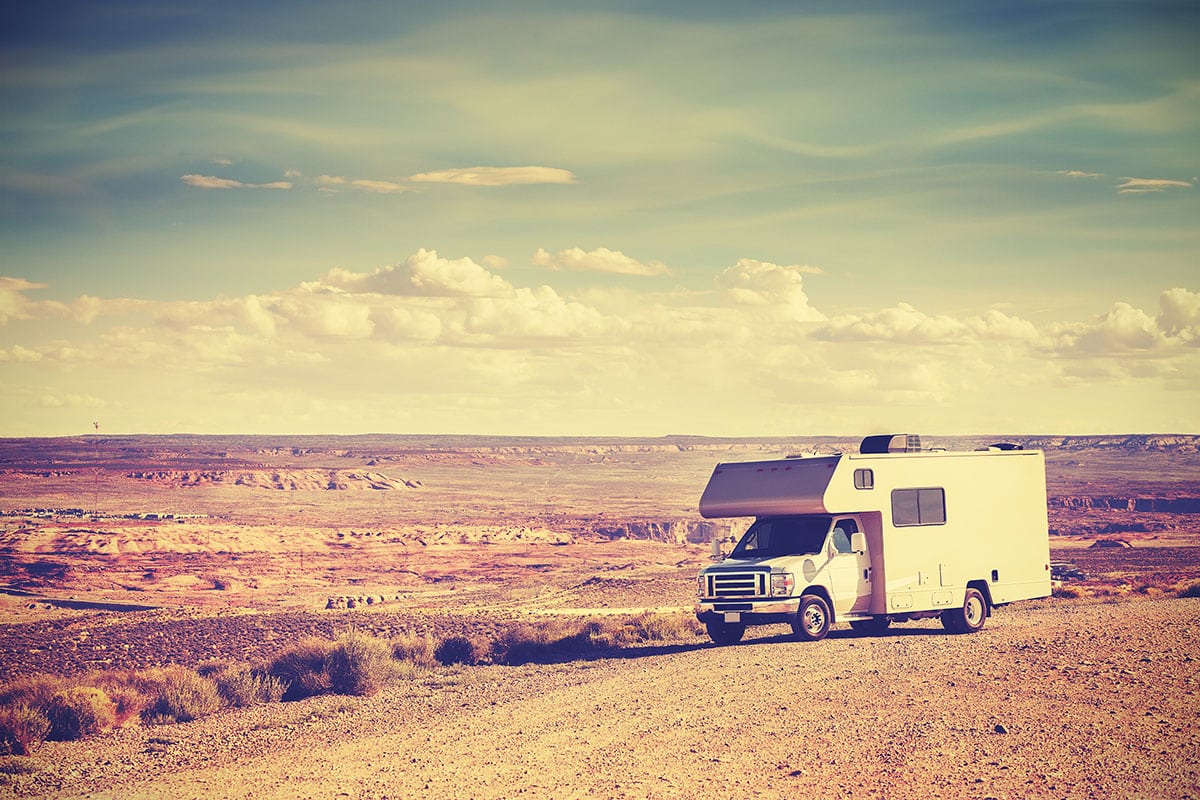
Desert dry camping. Getty Images
Until now, there’s always been a price to pay for boondocking without hookups. That price is the careful monitoring that must happen if you don’t want to kill your RV house batteries, especially as night falls. For boondockers like me, electricity is a precious commodity. For instance, my husband and I are usually are running two computers, one tablet, two phones with individual internet hotspots, and other household appliances throughout the day, like our refrigerator. If the weather turns bad, our 500-watt RV solar array forces us to prioritize what we use and when, in order to keep power flowing and our batteries happy. With no more room on our roof or in our battery storage area to expand our solar power system, juggling power consumption is a constant, frustrating struggle on cloudy days.
During those times, our 16-year-old gas-powered generator often helps us meet our power needs. But being saved by a genset means always carrying a gallon of gasoline in our toolbox because our truck is diesel-powered. And I can’t count the number of times we’ve spilled gas on our hands while refilling the generator. Have you ever tried removing gasoline odor from your skin when you’re dry camping? It’s tough. And after all that, even our “super quiet” gas generator emits clatter that disturbs the peace, and fills the air with smelly fumes.
Despite the downsides of gas generators, we’ve been carrying it for years. Meanwhile we completely ignored the emerging portable power station technology that’s hit the RV gear marketplace over the last few years. Portable power stations powered by electricity revolutionized dry camping when I wasn’t looking! I became an instant fan once I tried one myself.
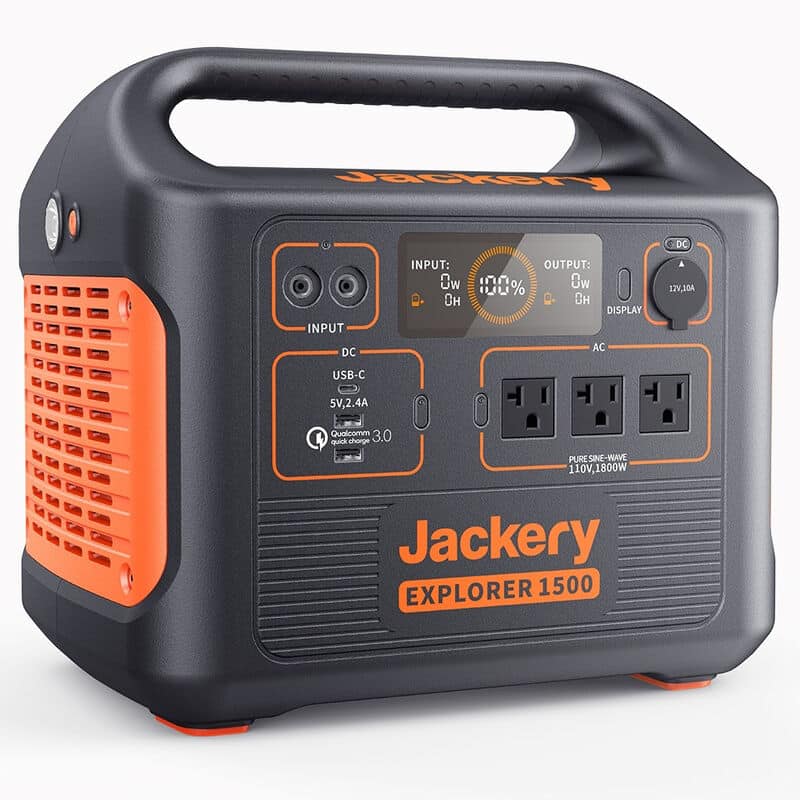
Jackery Explorer portable power station.
Portable Power Station 101
So what exactly do these boxes do? Portable power stations for RV camping are essentially a large rechargeable battery that can power devices ranging from smartphones to hair dryers and everything in-between. These devices are not complicated and easy to use without any technological know-how—or gasoline.
First, the portable power station gets charged with electricity so it can power your devices. You can give it juice by plugging it into a wall outlet before you leave home, or even at a campsite power pedestal before you venture into the wild for some boondocking. If you don’t get to charge it up at the campground, you can plug it into your vehicle’s 12V DC power output (the cigarette lighter socket) while you are on the road. You can even pair portable power stations with solar panels to recharge with free energy from the sun.
Once charged up, that power stays inside the station’s battery until you use it. Incoming power gets stored in a “mega” battery built into the power station. Usually, the battery is a high-quality lithium-ion battery, which is better at storing and dispensing stored energy. Lithium-ion batteries are also better at recharging, for instance, while utilizing “pass-through” technology that enables you to keep using your devices while the power station itself is being charged.
If you’re concerned about lithium-ion batteries exploding or catching fire, don’t be. Those stories you’ve heard about exploding lithium-ion batteries usually happen only to cheap knock-offs made with inferior materials. As long as you buy a portable power station for RV camping from a reputable brand, you can rest easy knowing that those manufacturers use high-quality batteries in their power stations.
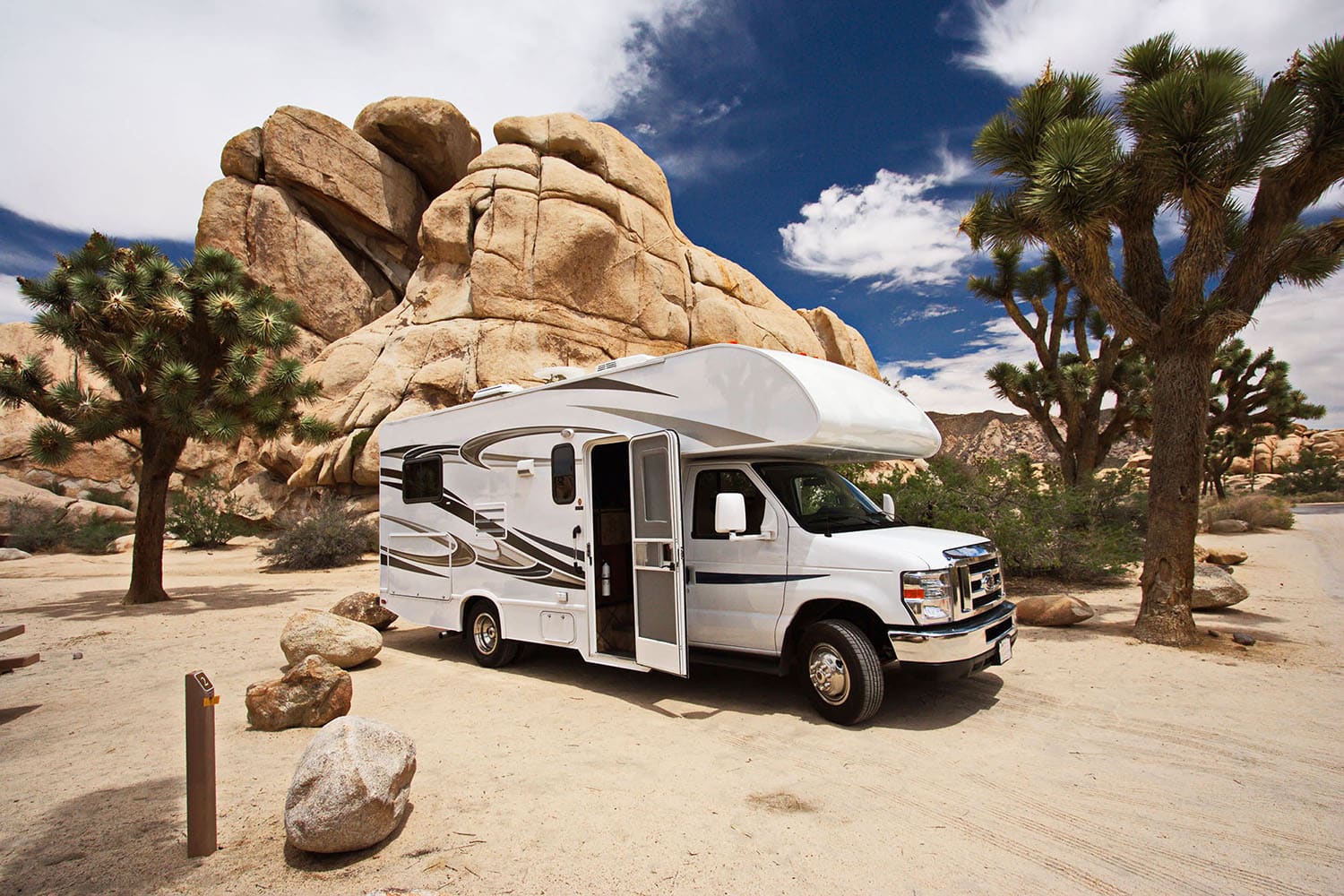
Getty Images
When you plug into the station, it converts stored energy into the kind of power you need. Portable power stations have multiple outputs that handle a variety of device power needs. Most stations come with AC outlets, DC carports, and oftentimes multiple USB and USB-C / A ports. So if you’re charging your laptop with the station’s AC outlet, the power station converts stored DC power into AC power. Just be sure you have the AC power option selected so that your device actually starts charging.
With the push of a button, the station can automatically regulate power output based on the requirements of whatever you just plugged into it. The built-in smart power management systems require little to no user intervention. In return you get better efficiency and longer internal battery life. Plus, you don’t need to worry about overcharging or having too many devices plugged in at the same time. The best portable power stations for RV camping have robust safety features, such as overheat protection, short circuit protection, and voltage regulation.
Why I Switched from Gas Power to Electric Power Generation
At first I wondered “Why not just stick to my gas-powered generator?” It’s a valid question, but the choice is clear when you weigh the benefits of a portable power station for RV camping against the pros and cons of carrying a big, bulky gas generator.
- They’re silent. Unlike generators, power stations make zero to little noise, about the decibel equivalent of a whisper. Your peaceful camping environment is preserved with these devices.
- They don’t spew harmful emissions. These eco-friendly, battery-powered devices can be used in places where generator hours are restricted because of noise and pollution concerns.
- Anyone can use them. Power stations don’t need priming or pumping to get then started. There’s no setup required, unlike most generators.
Of course, portable power station downsides aren’t all unicorns and rainbows. The biggest downside is they have limited power capacity that normally cannot run larger appliances like your air conditioner unless you make a Soft Start modification to the HVAC system.
In addition, portable power stations take longer to recharge. Instead of just pouring more gas into the generator to instantly restart the power supply, recharging can take up to 12 hours, depending on how you intend to do it. Usually, recharging through solar panels takes the longest to reload the battery supply.
Portable Power Station Considerations
Not all portable power stations have the same power output capacity or are the same size and weight. Recharging times and the number and types of devices they can charge will vary too. Don’t buy one until you audit the number and types of devices you want to charge with the device. Another important consideration is: where will you store a power station in your RV? Will it be easy to access? Is there ventilation to keep the station’s cooling fans happy? And since some can weigh almost as much as a gas generator, you’ll want to ensure you can put the station in the storage spot without too much physical struggle.
Since I stepped into the new era of using a portable power station for RV camping, I noticed that my stress level goes down when it’s cloudy outside and our solar power system isn’t as charged as we would like it to be. Instead of worrying about whether or not I can recharge my laptop to get in some additional work time, I just plug into the power station and relax. The power possibilities are practically endless now that I have modern camping technology on my side.

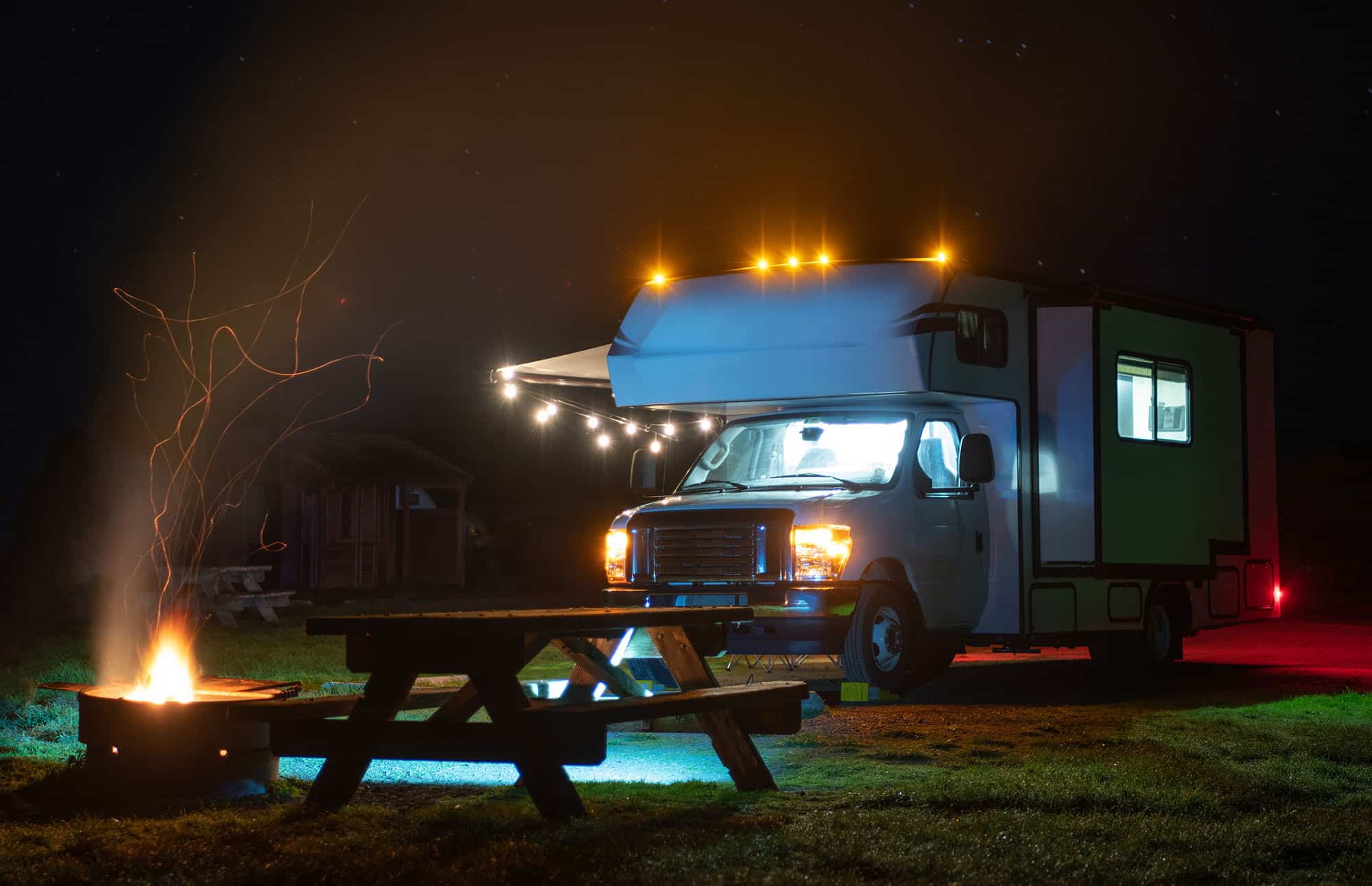

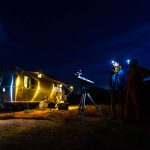

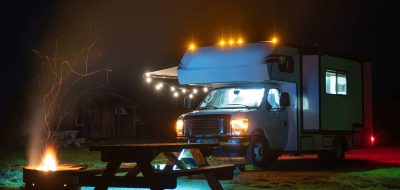




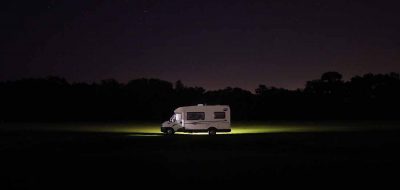

Larry Tucker
The amount of power available on these portable units is very limited. One needs a battery bank with at least 1000 AHs to be useful for any length of time. That’s five typical 200 AH batteries. Who’s going to lug them around?
Tom
How about doing a review of the available portable power stations with their good points and bad points, including price comparison on a kwh basis. I am looking for a unit but their are so many and with no comparisons it is hard to decide as they are not cheap. Make sure you evaluate recharging the units using a stand-alone 100 watt, or what ever it needs, solar panel.
Nancy Block
Do you have a couple of sites available on August 25 – 26. We have medium sized campers and like full service sites on grass.